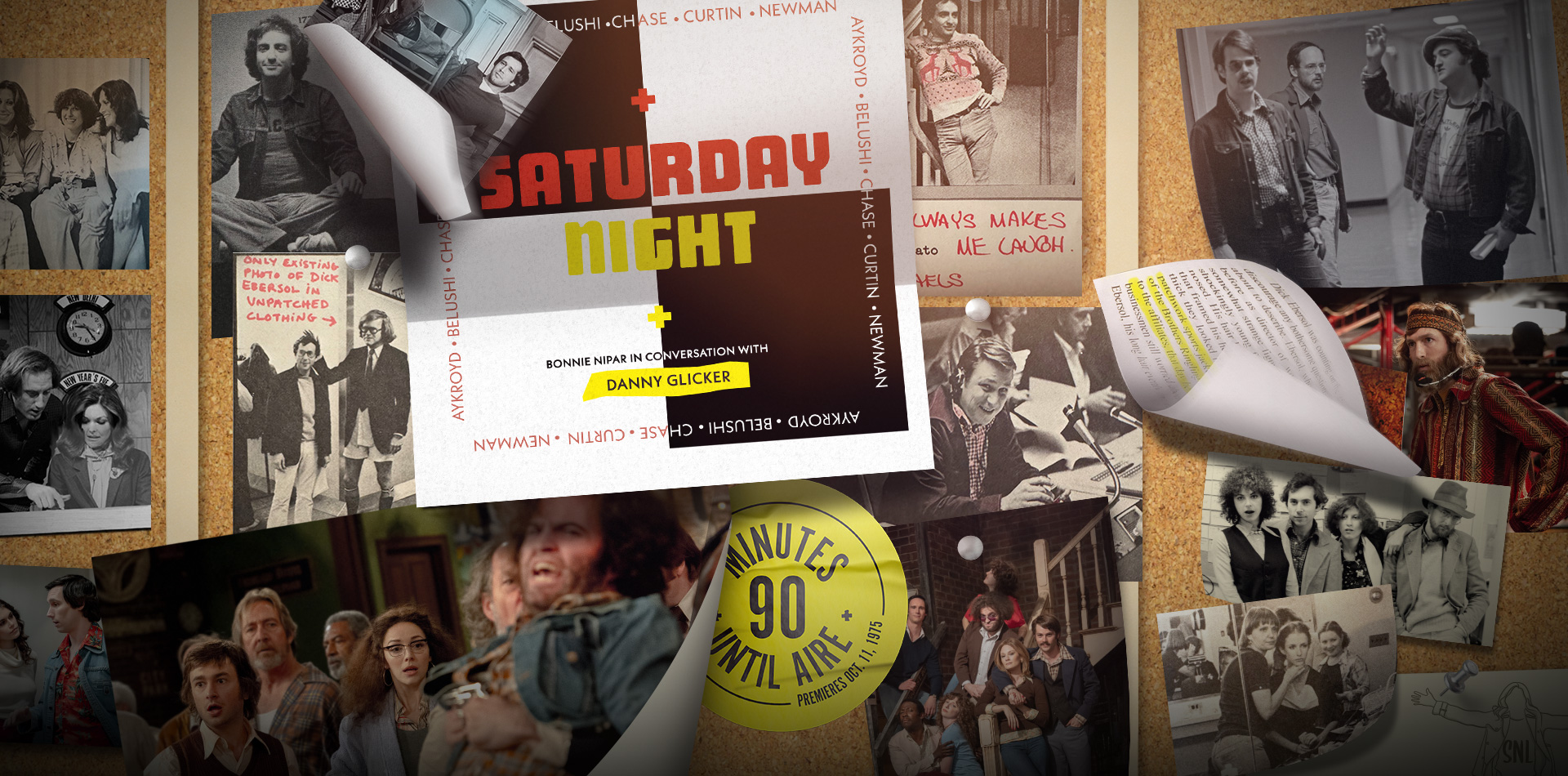By Bonnie Nipar | November 11, 2024
Saturday Night: Bonnie Nipar In
Conversation With Danny Glicker
BONNIE
I was tending bar in a jazz club the night Saturday Night debuted. The next day all my friends, many of whom were musicians or into nightlife and clubbing, were raving about it. That show changed late-night television forever. You wouldn’t think of Saturday Night as anthropological, yet it’s a study of history as much as it is creating a show. It captures a slice of New York, the characters, and honors the chaos surrounding the inception.
DANNY
Up until this moment, there was a group of people who were not being spoken for. It appealed to a younger, edgier group who wanted to turn on the TV and see something that felt dangerous and spoke to them. I wanted to communicate that post-1960s hangover where people were still finding themselves and their own voices.
BONNIE
From beginning to the end, there’s not a second that’s not alive and exciting. What spurred your intent?
DANNY
I felt the clothes represented their souls, not just what they were wearing. I wanted to see the messiness of their existence, the pleasure of popping in and visiting these people who have been culturally important to so many of us—creating a world of high-octane realism.
BONNIE
All these characters and people are beloved. What did it feel like to match them historically?
DANNY
Whenever I’m creating a real person, especially a character we have a history with, the idea is not to do a direct impression, but express their essence. You have to be open to the marriage between your actor and the character.
BONNIE
This is your sixth project with writer-director Jason Reitman. When I met him recently, he mentioned your first interview. He said,
“Danny talked about the importance of choosing the right necktie for each corporate character. When he said, ‘Ties are the window to the soul!’ I knew I had the right guy.”
DANNY
I designed Jason’s first movie, Thank You for Smoking, in 2005. I really love growing with him as an artist and developing a shorthand. It’s rare to return to work with the same group of people. He has been wonderful making sure each project challenges him and challenges me, forcing us to keep stretching new muscles.
BONNIE
With over 80 speaking characters constantly moving and overlapping, how did you make the costumes work for each scene?
DANNY
I spent a lot of time creating highly detailed boards. Jason and I agreed every character had to have one iconic element from the original show that made you automatically know who they are in this nonstop barrage of human beings. A visual trick I played throughout is when we see them in dress rehearsals, I never put them in a complete costume. I wanted the audience to grapple with the tension created when something isn’t complete, by showing them the puzzle pieces but never clicking them together. That was an “aha moment” when I realized, “Oh, I can have a big part in building the visual tension of this story.”
BONNIE
Lorne Michaels is the center of the frame. How did you decide on his look?
DANNY
I had one of those “kill your darling” moments with Lorne Michaels. There was a ’60s reindeer sweater that Lorne often wears in the research, and I found the exact vintage sweater. Lorne had to be instantly recognizable, and I was convinced it had to be the hero piece. But it wasn’t right. The knitted vest, shirt, and jeans were a custom-made recreation of another Lorne Michaels look. When the vest gets pulled off for “Weekend Update,” we see he’s been in a cowboy shirt the whole time. Then the blazer goes on and it’s too big, but we don’t realize it’s not working until Chevy Chase replaces him and gets the blazer. I thought that was the perfect metaphor—everything for SNL was barely patched together.
BONNIE
Tell me about the iconic bumblebee costume.
DANNY
There was a controversy over whether John Belushi’s bee outfit was working or veering into absurdism. The original designer of Saturday Night was the legendary theater costume designer Franne Lee, and the bee suits were her creation.My job was to honor her edgy vision. They were made from store-bought union suits that were dyed and painted. I had to build more than 30 ’70s-style union suits in the specific dyeable cotton. Then we had to make sure the spray-painted stripes accurately reflected the sloppiness of the original for
that dodgy, dicey feel.



